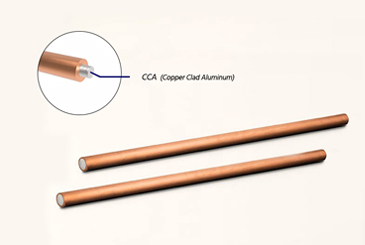Why Chalco 5251 aluminum forgings?
Quality could meet aviation standard
BS 5L44 Alloy 5251 Forging Stock and Forgings.
We meet international aviation quality certification standards
AS9100
OHSAS 18001
ISO14001
ISO 9001
NADCAP HT
NADCAP NDT
IATP16949

Chalco is a manufacturer with advanced technology and R&D capabilities in the field of aerospace materials, committed to common development with customers.
Specification of 5251 aluminum forgings
| Forging | Types | Max Weight | Max Measurement |
| Open Die Forge | cube | ≤5T |
Length≤7000mm; width≤2000mm; height≤500mm |
| disc | ≤5T | diameter≤2500mm | |
| ring | ≤5T |
Outer diameter of quenching parts≤2500mm; outer diameter of non-quenching parts≤4000mm; height≤500mm |
|
| cylinder | ≤5T |
Out diameter 200 to 800mm; Length≤2000mm; outer diameter 801 to 2000mm; length≤1500mm |
|
| axle | ≤8T |
length≤7000mm, diameter≤800mm |
|
| Closed Die Forge | PVA≤3.0 (Diameter≤1950mm) | ||
| Complicated closed die forge parts | PVA≤1.5㎡\(Diameter≤1400mm) |
Chemical composition of 5251 aviation aluminum forgings
| Element | Composition % |
| Aluminum (Al) | 97.0-99.0 |
| Magnesium (Mg) | 2.2-2.8 |
| Manganese (Mn) | 0.10 max |
| Chromium (Cr) | 0.15 max |
| Copper (Cu) | 0.10 max |
| Iron (Fe) | 0.40 max |
| Tin (Sn) | 0.15 max |
| Silicon (Si) | 0.25 max |
| Titanium (Ti) | 0.15 max |
| Zirconium (Zr) | 0.10 max |
| Boron (B) | 0.05 max |
| Individual impurities total | 0.05 max |
| Total impurities | 0.15 max |
Typical material properties for 5251 aluminium forgings
| Mechanical Properties | Minimum Value | Test Method |
| Yield strength (Rp0.2) | 110 MPa | BS EN 10002-1 or BS EN 2004-1.2 |
| Tensile strength (Rm) | 160 MPa | BS EN 10002-1 or BS EN 2004-1.2 |
| Elongation (A) | 8% | BS EN 10002-1 or BS EN 2004-1.2 |
| Reduction of area (Z) | 10% | BS EN 10002-1 or BS EN 2004-1.2 |
Geometric dimensions and appearance of 5251 aluminum forgings
| Dimensional Tolerances | Forgings and Forging Stock |
| Diameter or Least Distance Between Parallel Surfaces | +2%/-0% |
| Length or Width | +2%/-0% |
| Thickness | +3.5%/-0% |
| Twist | 3mm max per meter length |
| Warpage | 1.5% max of the length, width or thickness |
| Straightness | 1.5mm max deviation per meter length |
| Surface Finish | Smooth and free from cracks, tears, laps, and other defects that impair the use of the material |
| Workmanlike Finish | Forgings shall be free from burrs exceeding 1.5% of the local thickness or diameter, and sharp edges or corners that impair the use of the material |
Characteristics of 5251 aluminum forgings
- Good weldability and corrosion resistance
- Excellent cold workability
- High strength, especially in high temperatures
- Good plasticity and low density
- Excellent forming properties and easy to process.

Application of 5251 aviation aluminum forgings
Common forging shapes include but are not limited to the following:
- Flat forgings: used to manufacture large planar components, such as wing and fuselage surfaces.
- Ring forgings: used to manufacture aircraft engine shells, hubs, and gas turbine components.
- Axial forgings: used to manufacture aircraft engine shafts and blades.
- T forgings: used to manufacture corners connecting two components.
- Z forgings: used to manufacture components that need to withstand bidirectional loads, such as struts and suspension parts.
The above are only common forging shapes, and other forging shapes may be used in different application scenarios.















